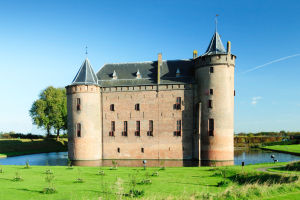Floral art, as a craft combining both artistic and practical elements, has a long history.
It is not just about arranging flowers; it is a way to express beauty and emotions.
In floral art education, we not only learn how to skillfully combine flowers but also understand the basic principles and techniques of floral design, thereby enhancing our aesthetic sense and creativity.
Basic Principles
The fundamental principles of floral art include color coordination, shape and structure, proportion and space, and style and theme.
1. Color Coordination: Color is a crucial element in floral art. Common color schemes include complementary colors, analogous colors, and monochromatic schemes. Complementary colors, such as red and green, create a strong visual impact, while analogous colors, like blue and purple, appear softer and more harmonious. The use of color can enhance the emotional expression of floral works.
2. Shape and Structure: The shapes of floral arrangements are generally categorized as symmetrical, asymmetrical, and round. Symmetrical arrangements emphasize balance and stability, suitable for formal occasions, while asymmetrical arrangements offer a more dynamic and natural feel, ideal for casual and relaxed settings. Structurally, the framework of the arrangement must be stable to support the placement of floral materials.
3. Proportion and Space: In floral art, proper proportion and space management are crucial. Excessive flowers can look cluttered, while too few can appear monotonous. Learning to balance these elements can make your arrangements more harmonious.
4. Style and Theme: Style and theme are key to conveying the intention of a floral work. One can choose traditional styles, such as classic Western floral art, or modern styles, like minimalist floral design. The design can also be tailored to different occasions and holidays.
Basic Steps
Floral art education typically involves the following steps: selection of materials, design, arrangement, and maintenance.
1. Selection of Materials: Choosing appropriate floral materials is the first step to a successful arrangement. Fresh flowers, leaves, and branches ensure the beauty and longevity of the work. Understanding the characteristics and pairing principles of the materials is also essential.
2. Design: Design is the core of floral creation. Based on the theme and style, determine the overall structure and layout of the floral arrangement. Using sketches or templates can help in planning the design.
3. Arrangement: The arrangement process requires attention to detail. First, trim the flowers, removing excess leaves and branches. Then, based on the design plan, place the flowers into a vase or floral container. During the arrangement, continually adjust the placement of the materials to achieve the desired effect.
4. Maintenance: Maintenance is a crucial aspect after completing the arrangement. Regularly change the water, and keep the materials clean and fresh. Different types of floral materials may require different care methods to extend their display period.
Application Scenarios
Floral art is not limited to home decoration; it has broad applications in various settings:
1. Home Decoration: Floral art can make home spaces more warm and interesting. Whether it’s a bouquet on the dining table or floral decorations in the living room, floral art adds color to the home environment.
2. Festive Celebrations: In festivals and celebrations, floral art is an indispensable decorative element. Whether for weddings, birthdays, or holiday celebrations, exquisite floral works enhance the overall atmosphere.
3. Commercial Spaces: Floral art also plays an important role in commercial settings. For example, floral decorations in hotel lobbies, restaurants, and offices can enhance customer experience and satisfaction.
Conclusion
Floral art is not only a craft but also a form of artistic expression.
Through floral art education, we can learn to present flowers and plants in beautiful forms, enhancing our aesthetic abilities and creativity. Whether you are a beginner or an experienced floral enthusiast, understanding and mastering the basic principles and techniques of floral art will allow you to discover more joy and beauty in the world of flowers.


